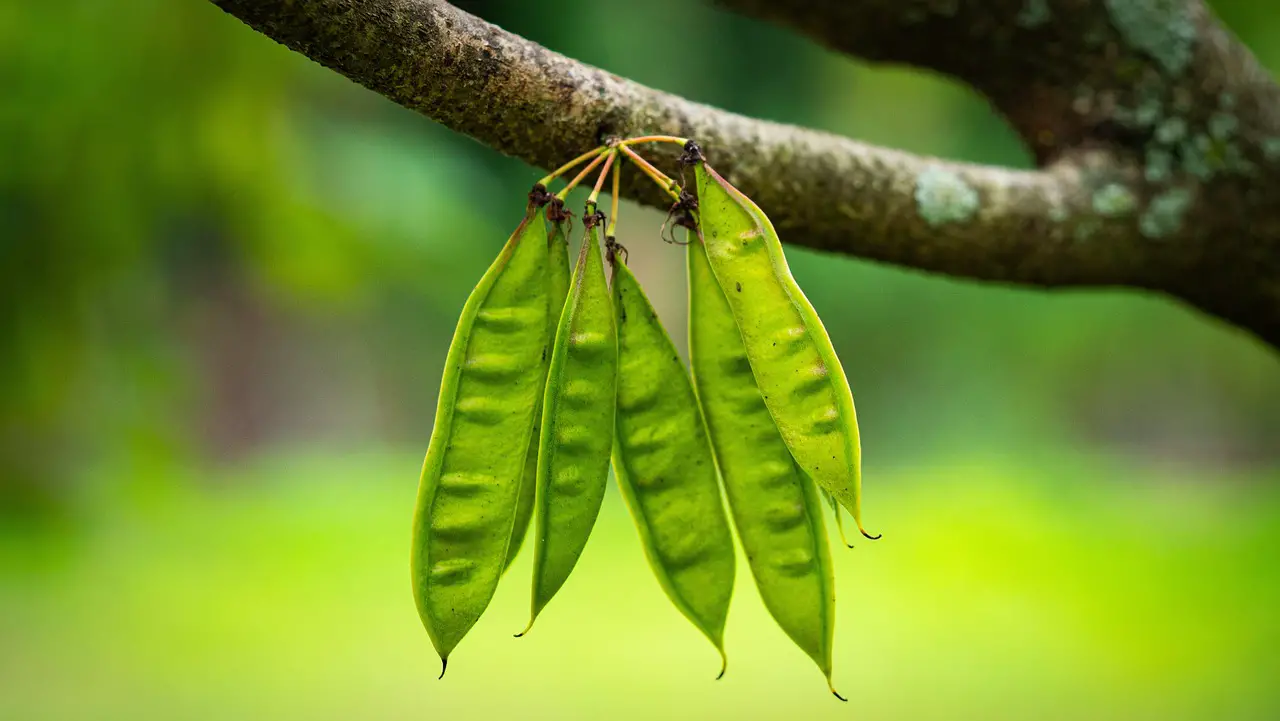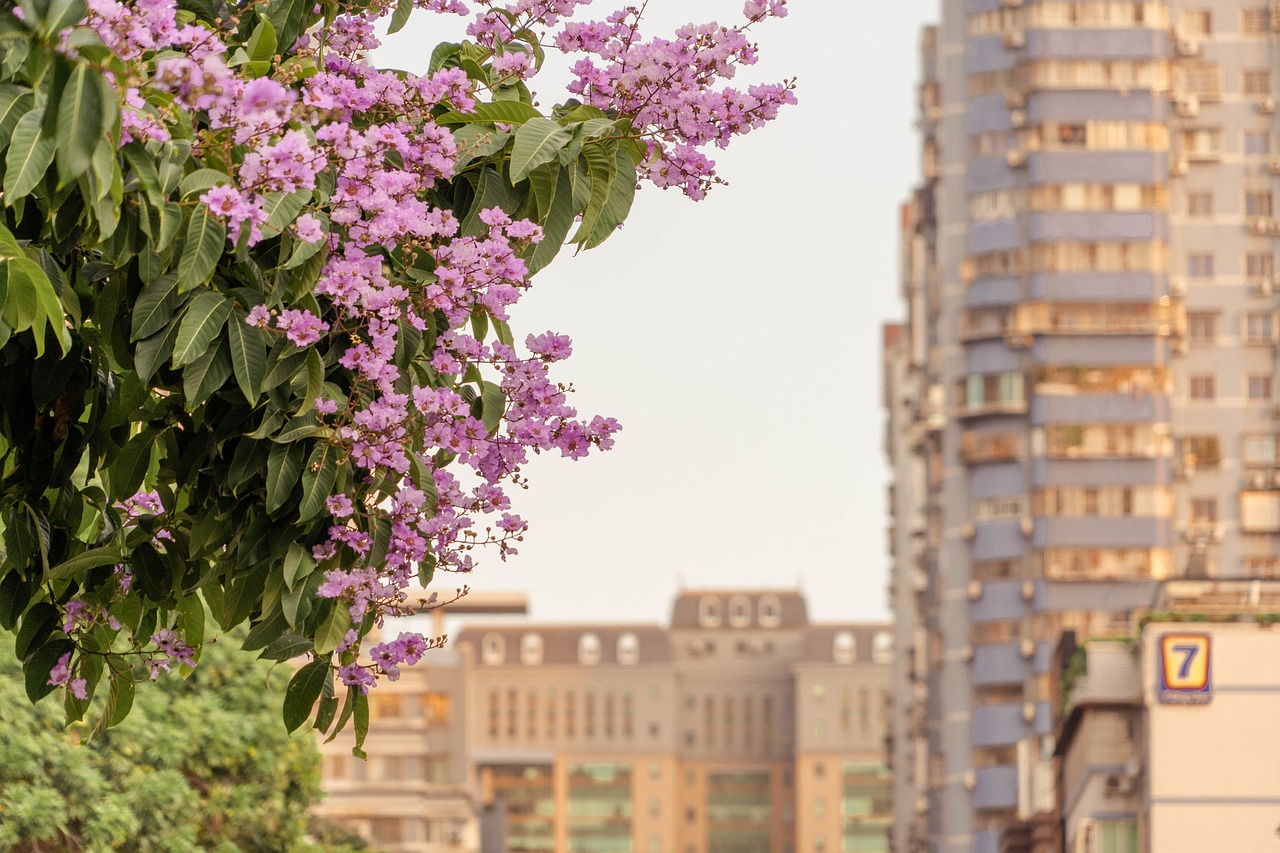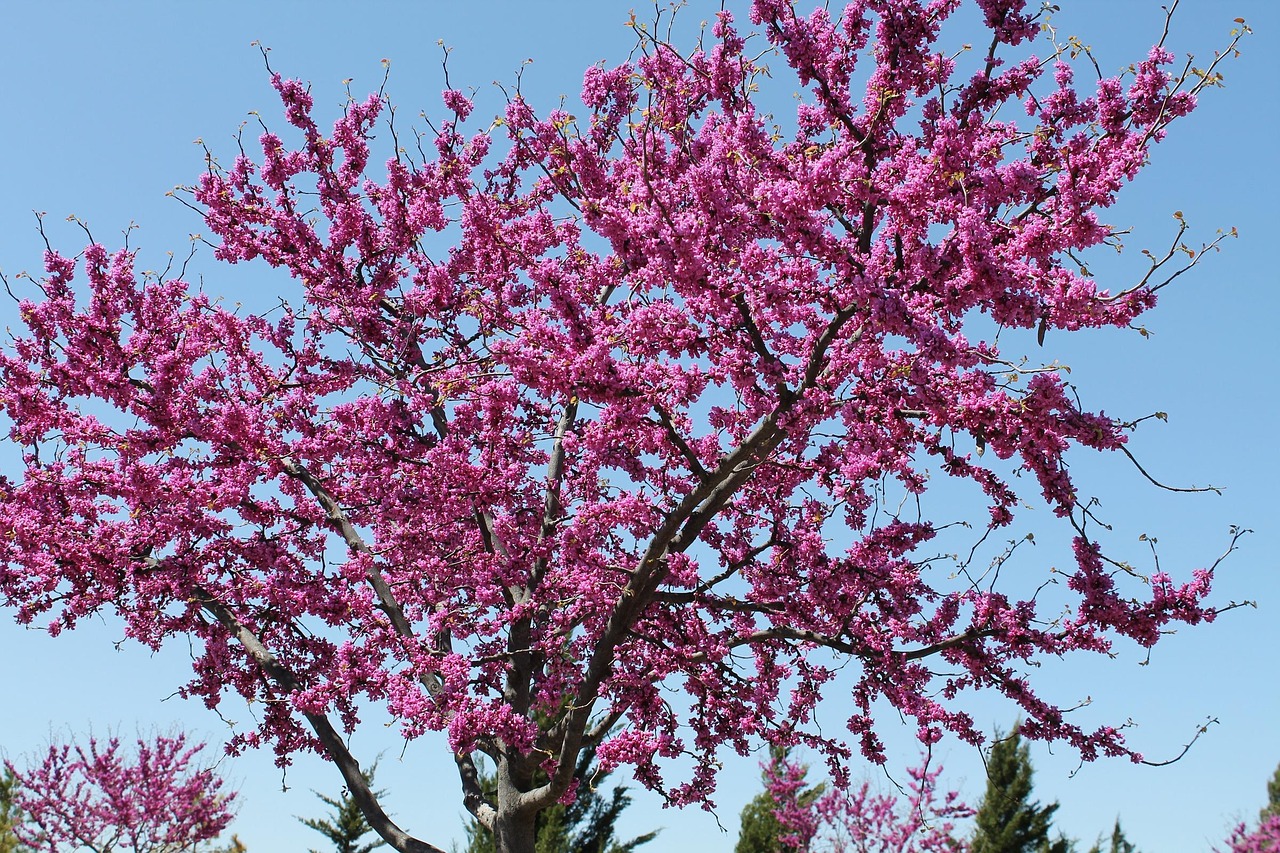The Texas Redbud tree typically grows at a moderate rate of 12 to 24 inches per year in dry regions, depending on soil conditions and water availability. Proper care can enhance its growth potential in these environments.
Understanding the Texas Redbud Tree
The Texas Redbud (Cercis canadensis var. texensis) is a small tree popular for its stunning spring blossoms. Originating from the southern United States, it is well-adapted to various climates, including dry regions. This tree is highly valued for its ornamental qualities, providing vibrant pink to purple flowers that bloom before the leaves emerge.

In dry regions, the growth rate of the Texas Redbud can vary based on several factors such as soil type, moisture levels, and overall care. While it thrives best in well-drained soils with adequate moisture, it has demonstrated resilience in drought conditions. Understanding its growth patterns can help homeowners and landscapers make informed decisions when planting this beautiful tree.
Factors Influencing Growth Rate
Several key factors contribute to the growth rate of Texas Redbud trees in dry regions. These include:
- Soil Quality: Well-drained, loamy soil promotes faster growth. Sandy soils may require additional organic matter to retain moisture.
- Water Availability: Regular watering during dry spells encourages healthy growth. Established trees are more drought-tolerant.
- Sunlight: Texas Redbuds thrive in full sun to partial shade. Adequate sunlight exposure supports vibrant blooming and healthy foliage.
- Nutrient Supply: Fertilizing can enhance growth rates, particularly when using a balanced fertilizer in early spring.
Growth Rate Overview
The average growth rate for Texas Redbuds in dry regions falls within a specific range. Understanding this range can help set realistic expectations for tree development. The following table outlines the growth characteristics of Texas Redbuds:

| Growth Characteristics | Details |
|---|---|
| Typical Growth Rate | 12 to 24 inches per year |
| Mature Height | 20 to 30 feet |
| Mature Width | 15 to 25 feet |
| Optimal Soil pH | 6.0 to 7.0 |
| Drought Tolerance | Moderate |
The Texas Redbud’s moderate growth rate means that it can take several years to reach its full potential. Factors such as climate conditions and landscape management play a crucial role in determining how quickly these trees can grow. In well-maintained settings where water and nutrients are available, the redbud can thrive and establish itself effectively.
Planting and Care Tips
Proper planting and care practices can significantly impact the growth rate of Texas Redbuds in dry regions. Here are some essential tips:
- Selecting a Location: Choose a site that has well-draining soil and receives ample sunlight.
- Watering: Water young trees regularly, especially during hot, dry periods. Deep watering is preferable to encourage deep root growth.
- Mulching: Apply a layer of mulch around the base to retain moisture and suppress weeds.
- Pruning: Prune dead or damaged branches to promote air circulation and healthy growth.
By following these guidelines, homeowners can enhance the vitality and growth potential of their Texas Redbud trees, even in challenging dry conditions.

Common Pests and Diseases
The health of the Texas Redbud tree can be compromised by various pests and diseases, especially in dry regions where stress factors may weaken the tree. Understanding these threats is vital for maintaining the tree’s growth rate and overall wellbeing.
Pests Affecting Texas Redbuds
Several pests can affect the Texas Redbud, leading to stunted growth or damage. Here are some common pests to watch for:
- Spider Mites: These tiny pests feed on leaf sap, causing stippling and discoloration of leaves. In severe cases, leaves may drop prematurely.
- Scale Insects: Scale insects attach themselves to branches and leaves. They suck sap and can lead to yellowing leaves and a decline in health.
- Aphids: These small insects also feed on sap and can cause curled leaves. They excrete honeydew, which attracts ants and leads to sooty mold.
- Leafhoppers: These pests can cause damage by feeding on the undersides of leaves, leading to a decline in vigor.
Diseases That May Affect Growth
In addition to pests, Texas Redbuds are susceptible to several diseases. Identifying these early can help mitigate their impact:
- Cercospora Leaf Spot: This fungal disease causes dark spots on leaves, leading to premature leaf drop.
- Verticillium Wilt: A soil-borne fungus that affects the vascular system of the tree, causing wilting and eventually death.
- Powdery Mildew: This fungal infection appears as a white powder on leaves, which can affect photosynthesis.
Managing Pests and Diseases
Effective management strategies can protect Texas Redbuds from pests and diseases. Here are some recommended practices:

- Regular Monitoring: Frequently inspect trees for signs of pest infestations or disease symptoms. Early detection is crucial.
- Proper Pruning: Maintain healthy airflow through the canopy by pruning appropriately. This helps reduce humidity levels that favor fungal growth.
- Organic Treatments: Use insecticidal soaps or neem oil to manage pests without harming beneficial insects.
- Fungicides: In cases of severe fungal infections, applying appropriate fungicides may be necessary to protect the tree.
The Importance of Mulching
Mulching is a valuable practice for Texas Redbud trees, especially in dry regions. It provides multiple benefits that contribute to the tree’s growth rate and health.
Benefits of Mulching
Here are several reasons why mulching is essential:
- Moisture Retention: Mulch helps retain soil moisture, reducing the need for frequent watering.
- Weed Suppression: A layer of mulch prevents weeds from growing around the base of the tree, reducing competition for nutrients and water.
- Temperature Regulation: Mulch moderates soil temperature, keeping roots cool in hot weather and warm during cooler temperatures.
- Nutrient Addition: As organic mulch breaks down, it adds nutrients to the soil, enhancing fertility over time.
Choosing the Right Mulch
Selecting the right type of mulch is important. Some effective options include:
- Bark Mulch: Provides excellent moisture retention and decomposes slowly, making it a long-lasting option.
- Wood Chips: Similar to bark mulch, wood chips break down over time and improve soil structure.
- Compost: Offers additional nutrients and improves soil quality as it decomposes.
The application of mulch should be done correctly. It is best to apply a 2- to 4-inch layer around the base of the tree, ensuring it does not touch the trunk directly. This prevents moisture-related issues such as rot.
Irrigation Strategies for Dry Regions
Irrigation plays a critical role in the growth of Texas Redbuds in dry areas. Implementing effective watering strategies can boost growth rates significantly.
Types of Irrigation Systems
Consider various irrigation systems suitable for your landscape:
- Drip Irrigation: Delivers water directly to the root zone, minimizing waste and promoting efficient water use.
- Soaker Hoses: Soaker hoses allow water to seep slowly into the soil, providing consistent moisture without runoff.
- Sprinkler Systems: While effective, care should be taken to avoid over-saturation, especially during rainy periods.
The frequency of irrigation will depend on local climate conditions. During dry spells, young trees may require watering every week. Established trees require less frequent watering but should still be monitored for signs of drought stress.
Seasonal Care for Texas Redbuds
Seasonal care is essential for maintaining the health and growth rate of Texas Redbud trees, especially in dry regions. Each season presents unique challenges and opportunities for growth, requiring tailored approaches to care.
Spring Care
Spring is a vital time for Texas Redbuds as they emerge from dormancy. Here are key activities to undertake during this season:
- Fertilization: Apply a balanced, slow-release fertilizer to provide essential nutrients that support new growth and flowering.
- Mulching: Refresh the mulch around the base to help retain moisture and suppress weeds as temperatures rise.
- Watering: Ensure young trees receive adequate water as they begin to leaf out. Monitor soil moisture closely.
Summer Care
In summer, the focus shifts to maintaining hydration and protecting the tree from heat stress:
- Irrigation Management: Increase frequency of watering during particularly hot spells. Deep watering encourages deeper root growth.
- Weed Control: Regularly check for weeds that may compete for resources. Hand-pulling or using organic herbicides can be effective.
- Monitoring Pests: Keep an eye out for common pests like spider mites and aphids. Early intervention ensures they do not overwhelm the tree.
Fall Care
As the weather cools, preparations for winter begin. Fall care includes:
- Pruning: Prune any dead or diseased branches to enhance air circulation and reduce disease risk. This is also a good time to shape the tree.
- Watering: Continue to water until the ground freezes, ensuring the tree stores adequate moisture for winter.
- Fertilization (if needed): If soil tests indicate nutrient deficiencies, a late-fall application of fertilizer can be beneficial.
Winter Care
Winter presents unique challenges, particularly in colder climates. Protecting the tree during this time is crucial:
- Insulating Roots: Apply mulch around the base to insulate roots against extreme cold. This helps prevent freeze-thaw cycles that can damage roots.
- Watering (if necessary): Water during dry spells to prevent desiccation, especially for young trees that are still establishing their root systems.
- Pest Monitoring: Inspect for overwintering pests and diseases that may affect new growth in the spring.
Soil Testing and Improvement
The quality of soil directly influences the growth rate of Texas Redbuds. Conducting soil tests can provide valuable insights into nutrient levels and pH balance.
Importance of Soil Testing
Soil testing allows you to understand the specific needs of your Texas Redbud trees. Key benefits include:
- Nutrient Analysis: Identifying nutrient deficiencies helps determine appropriate fertilization strategies.
- pH Levels: Knowing the pH level informs adjustments needed for optimal tree health, as Texas Redbuds prefer slightly acidic to neutral soils (pH 6.0 to 7.0).
- Drought Resistance: Healthy soil enhances water retention, which is critical in dry environments.
Improving Soil Quality
If soil tests indicate deficiencies or poor structure, consider these improvement methods:
- Add Organic Matter: Incorporate compost or well-rotted manure to enhance soil structure and fertility.
- Aeration: Aerate compacted soils to improve drainage and root penetration.
- pH Adjustment: Use sulfur or lime as needed to adjust pH levels according to soil test recommendations.
Companion Planting with Texas Redbuds
Companion planting involves pairing Texas Redbuds with other plants that can enhance their growth and provide additional benefits. Choosing suitable companions can improve soil health, attract beneficial insects, and create a more vibrant landscape.
Benefits of Companion Planting
The advantages of companion planting with Texas Redbuds include:
- Pest Control: Certain plants can repel pests or attract beneficial insects that prey on harmful pests.
- Biodiversity: A diverse planting scheme promotes a healthy ecosystem, which can benefit all plants involved.
- Aesthetic Appeal: Pairing redbuds with flowering perennials or shrubs creates a visually appealing landscape.
Recommended Companion Plants
Selecting suitable companion plants can enhance the growth environment for Texas Redbud trees. Some beneficial companions include:
- Sage (Salvia): This aromatic herb can deter pests while attracting pollinators.
- Echinacea (Coneflower): These flowers attract beneficial insects and provide vibrant color.
- Clover: Often used as ground cover, clover improves soil nitrogen levels and suppresses weeds.
By considering these practices, you can ensure that your Texas Redbud trees thrive in dry regions, enhancing their beauty and longevity in your landscape.
Additional Considerations for Texas Redbud Care
In addition to the previously discussed practices, there are several other considerations that can enhance the growth and longevity of Texas Redbud trees in dry regions. These factors include climate considerations, seasonal changes, and long-term maintenance strategies.
Climate Considerations
The climate in which Texas Redbuds are planted significantly influences their growth rate. Understanding local climate conditions can help in making appropriate care decisions:
- Temperature Extremes: Texas Redbuds can tolerate a range of temperatures but may struggle in extreme heat without adequate water. Protecting young trees from harsh sun can promote healthier growth.
- Humidity Levels: Low humidity can increase water loss through transpiration. Monitoring humidity and adjusting watering practices can mitigate stress on the trees.
- Wind Exposure: Strong winds can damage branches and exacerbate water loss. Planting windbreaks or selecting sheltered locations can help reduce wind impact.
Seasonal Changes and Adaptation
As seasons change, Texas Redbuds will go through various growth stages. Adapting care practices to these stages is essential:
- Budding and Blooming: Spring is the time for budding and blooming. Providing extra care during this period ensures that trees produce vibrant flowers.
- Leaf Drop in Fall: As leaves drop in fall, it is essential to clean up fallen leaves to prevent disease buildup, especially from pests that may overwinter in debris.
- Winter Dormancy: During dormancy, Texas Redbuds require less attention but should still be monitored for moisture levels and potential pest activity.
Long-Term Maintenance Strategies
Establishing a long-term maintenance plan can lead to healthier trees and a more beautiful landscape. Consider the following:
- Regular Health Assessments: Periodically evaluate the health of your Texas Redbud trees. Look for signs of pests, diseases, or nutrient deficiencies.
- Soil Amendments: Over time, soil quality may decline. Regularly amend the soil with organic matter to sustain fertility and structure.
- Education and Resources: Stay informed about best practices for tree care. Local extension services or gardening clubs can provide valuable information tailored to your region.
Final Thoughts
The Texas Redbud tree is a remarkable addition to any landscape, especially in dry regions where its resilience can shine. By understanding its growth rate and the factors that influence it, homeowners can successfully cultivate these beautiful trees. Proper planting, seasonal care, pest management, and companion planting strategies all contribute to the health and vitality of the Texas Redbud.
As we have discussed, each season brings unique challenges and opportunities for this tree. Regular monitoring and adjustments based on climate conditions are crucial for maximizing growth potential. Additionally, integrating practices like mulching, irrigation management, and soil testing will create an optimal environment for healthy development.
In summary, cultivating Texas Redbuds in dry regions requires a proactive approach that encompasses a variety of care strategies. With dedication and informed practices, these trees can thrive, providing stunning blooms and essential habitat for local wildlife while enhancing the beauty of your landscape.
By embracing these principles and continuously learning about tree care, you will not only ensure the success of your Texas Redbuds but also contribute positively to the ecosystem around you.
